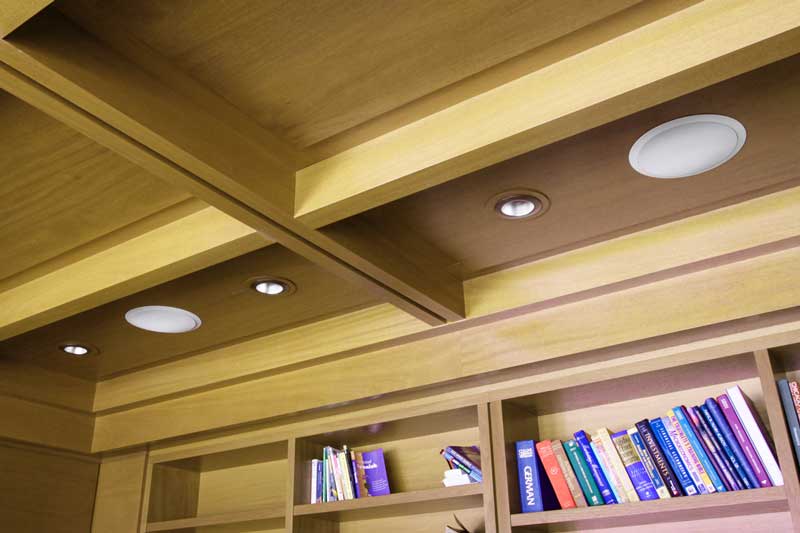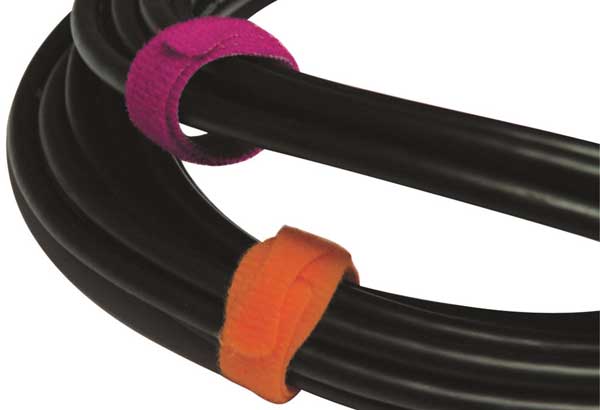How To Choose a Home Theater Installer
So let’s set a scene for you. You have finally found a dedicated space for your new home theater setup. You have figured out your layout and your budget. But, you don’t have the DIY skills, or you don’t care to build your setup. Plus, on top of that, you are not super knowledgeable about home theater. Time to choose a contractor or a local home theater installer to make your dream a reality. Sounds fantastic, right? That is until you get a quote that far exceeds your budget or has tons of add-ons you didn’t expect or understand. But the salesperson is willing to work with you to “sharpen their pencil” and make your dream come true. Awesome, let’s sign that quote and get started!
Let’s slow down before you put your hard-earned money on the table! I will help you navigate working with contractors, demystify their quotes and add-ons, and let you in on some insider information. Here is the thing, during the late ’90s, I funded my home theater addiction by working with my cousin as an AV installer for a local company. So I have some first-hand experience to back up my advice. Ready? Let’s get started!
Builder Vs Installer
There are a ton of scenarios when dealing with home theater installs. A typical one is that you are building a new house and the builder will install the home theater. This will be a turn-key type of affair where it comes with the house. It may surprise you to learn that this scenario can be an expensive and disappointing proposition. Here is something you might not know: Housebuilders typically subcontract everything. They will call an AV installer, get a quote, add 20% for project management, and pass the cost on to you. Or worse yet, they will have their interior designer manage it and install five speakers in the ceiling, put the TV over the fireplace mantle, and call it a day. Would that be the home theater you would choose to install?

Another typical scenario is that you have an unfinished space and you choose and hire the home theater installer. They come in and run speaker wire and install boxes and other hardware before your contractor comes and installs drywall and finishes the room. The installer will then return and finish the home theater install by connecting speakers and TV/projector and then calibrating the system.
The last common scenario is when people hire an installer to retrofit a space with a home theater. This job can include cutting open walls to fish speaker wire or cables, installing a panel or projector, or hiding speaker wires to make a cleaner look. They will also typically set up and calibrate your gear and troubleshoot any issues they find. If you have an excellent home theater installer, they will give you a crash course on how it all works.
Deciphering Quotes
Someone once told me something that has stuck with me years later – bulls**t baffles brains. While I don’t want to paint every salesperson and installer with the same brush, it is my experience that many try and overwhelm you. They use a bunch of technobabble or gibberish in the hopes that it will convince you to spend extra money. So, how do you combat that? Well, the first thing is to get at least three quotes. The second part is to scrutinize your quotes and do some research. Here are some tips for you to follow to help you with this.
Tip 1 – Don’t Tell Them Your Budget!
This advice sounds silly, but I rarely give any salesperson my “firm” budget. But, they need to know your budget to know what to recommend, right? Sure. But if you tell a contractor or installer that your budget is $10,000, the quote will be $9,999.99!

Here is how I would handle this when you are choosing a home theater installer: I would tell the installer I want a 5.2.4 (or whatever configuration you want to be installed) system installed in your AxBxC room. I would provide pictures of the space and then tell them what type of speakers I like or have heard. If they are competent, they should ask you a bunch of questions. Questions like how many seats there will be? Will the room be light-controlled? How far away you are sitting? Plus a whole bunch of other questions that help them figure out what would be the best system for your space, They might even try and talk you out of a particular configuration because your room won’t allow it. I have heard tales of installers talking people out of 7.2.4 and going to 5.2 because that’s what the space needed.
And again, before you choose a home theater installer, get multiple quotes and tell them that you are doing so. It might make them think twice about adding on something you don’t need! If they really want the job, they’ll know that price will be a factor in your decision-making. They’ll want to come in as low as they can.
Tip 2 – Look At The Equipment
Installers love to gravitate towards specific speakers for installs. Why? Massive profit margins! They call these “points” and each point is a percentage point. So a speaker with 50 points costs the dealer 50% of the MSRP. This means they can discount them deeply to impress the buyer and still make money.

The company I worked for would always push a particular entry-level speaker for home installs. It had a pretty crazy wholesale price. If you could sell it at full MSRP, you make insane profits. And if the buyer balked at the price? You could discount it up to 40% and still make a healthy profit! If your installer is charging you full MSRP for regularly discounted entry-level speakers, you should see some red flags. Even mid or high-end speakers will receive some discounts from dealers. Lastly, are they quoting you insane prices for in-ceiling Atmos speakers? Remember these speakers for ATMOSpheric sound. They carry ambient sounds, so they don’t need to be the best quality or even timbre matched.
The same goes with amplifiers. Are they trying to sell you a very impressive, feature-rich AV receiver that comes will an equally impressive price tag? Or are they pressing you to get separates? Alarm bells should be ringing right now. While I agree with selecting a slightly future-proof AV receiver, purchasing an Atmos capable AV receiver is wasteful if you don’t expect to move from 5.2 (always get a second sub!!). Plus, there are very few reasons to go with separates. A good installer will match your setup with the right AV receiver. Or at least have a good reason why they chose a specific product.
Tip 3 – Scrutinize the Accessories
Here, again, is where home theater installers love to add some razzle-dazzle to make them extra cash. If you are seeing terms like gold-plated, premium, or professional grade? Danger, danger, Will Robinson! In my experience, these are code words for added cost with no added value. So, for example, if you start seeing added costs from gold-plated HDMI or premium speaker cable, you need to question these additional costs. They may try to “get” you by giving you multiple options. If your home theater installer gives you options from which to choose, and some of those are much more expensive, you need to do some research. Some add-ons (like installing in-wall conduit for easily swapping out cables) are perfectly justified. Overly thick or “audiophile-grade” speaker cables are not.

Items like banana plugs or other convenience accessories follow the same advice. If I saw an extra (reasonable) cost for banana plugs, I would likely recommend you get them. But if the installers tell you that they will improve the sound, or any other magical properties, run for the hills!
Lastly, look for dealer-locked accessories like universal remotes. Many installers will recommend Control4, Crestron, or (when available) Harmony Hub Pro. These dealer-locked units require the installer to program and install them. But, more importantly, require you to pay the installer a service fee every time you want to make a change. Want to add a new piece of gear, make changes to a function, or need to troubleshoot? That’s a service fee! The other option is that you pay out a yearly subscription fee that covers any work done, whether you use it or not. So my suggestion? Explore other options like Sofabaton’s new X1 or existing U1. Or take a chance that Harmony will continue to support their hub-based remote and grab a used one.
Tip 4 – Look At The Labor Costs
I have a love/hate relationship with labor costs. Having a home theater installed in an unfinished basement and doing some retrofits, I know that installs are hard and that skilled people make installs look easy. That said, take a close look at the total costs for labor. Most good home theater installers will give you a minimum charge rate, a half and full-day rate. These rates mean they have seen your space and are confident that they know how long they will be on-site and price upfront.
If I saw a full-day rate of $1000-1400 for a crew of 4, I probably wouldn’t even blink at it. That’s a lot of parallel work happening, and they probably won’t take more than a 1/2 day for a simple install and a full day for a more complicated one. And on top of that, most good installers I have met won’t charge you if they run into issues and have to stay late or come back the next day.
That’s not to say that you should stay away from an hourly rate. But if the installer is experienced and has taken the time to see your space, the installer should tell you that the job should take X number of hours. In my experience, tradespeople know their jobs and skills and are confident quoting you firm prices for their services. You want to choose a home theater installer that knows what they are doing. This can be a sign that they do.
Tip 5 – Read the Fine Print
This tip is important for most things, but especially for home theater installs. Will the installer be patching any holes they make, and will they return to paint it the next day? Are there hidden shop charges or overrun rates? Does someone need to be home while they install? Do they show you how to use it? Is there a grace period where they will come back for free to tweak stuff? Will they calibrate the system?

Imagine coming home to see your brand new home theater, only to find holes in the wall that you need to patch. Or not knowing how to work something and paying for a service call to come and “fix” it. On the bright side, you can always email Rob H from AV Rant, and he probably knows more about that gadget than the installer does!
Tip 6 – Ask for References / Read Reviews
Any good home theater installer you choose should be prepared to provide you with references or photos of work they have completed. And Google is your friend here. Five minutes of searching will probably get you a lot of information, either good or bad, about your prospective installer. One of the things I look for is comments where they had an issue, and the installer fixed it. This feedback tells me that the installer stands by their work and will make it right.
And I can’t stress this enough: Call their references! Talk to them about their experiences. Ask them what they liked, and what they wish they would have done differently. A few minutes on the phone can save you a lot of headaches (and money) later.
Our Take
There are lots of good home theater installers out there, and there are lots of bad ones. So it’s up to you to read reviews and do your due diligence before choosing the right one. Ultimately, it will be your decision on who to hire, but hopefully, this article has helped you identify possible red flags and weed out the good from the bad. So be clear with what you want, read the fine print, and ask questions if you are unsure.


